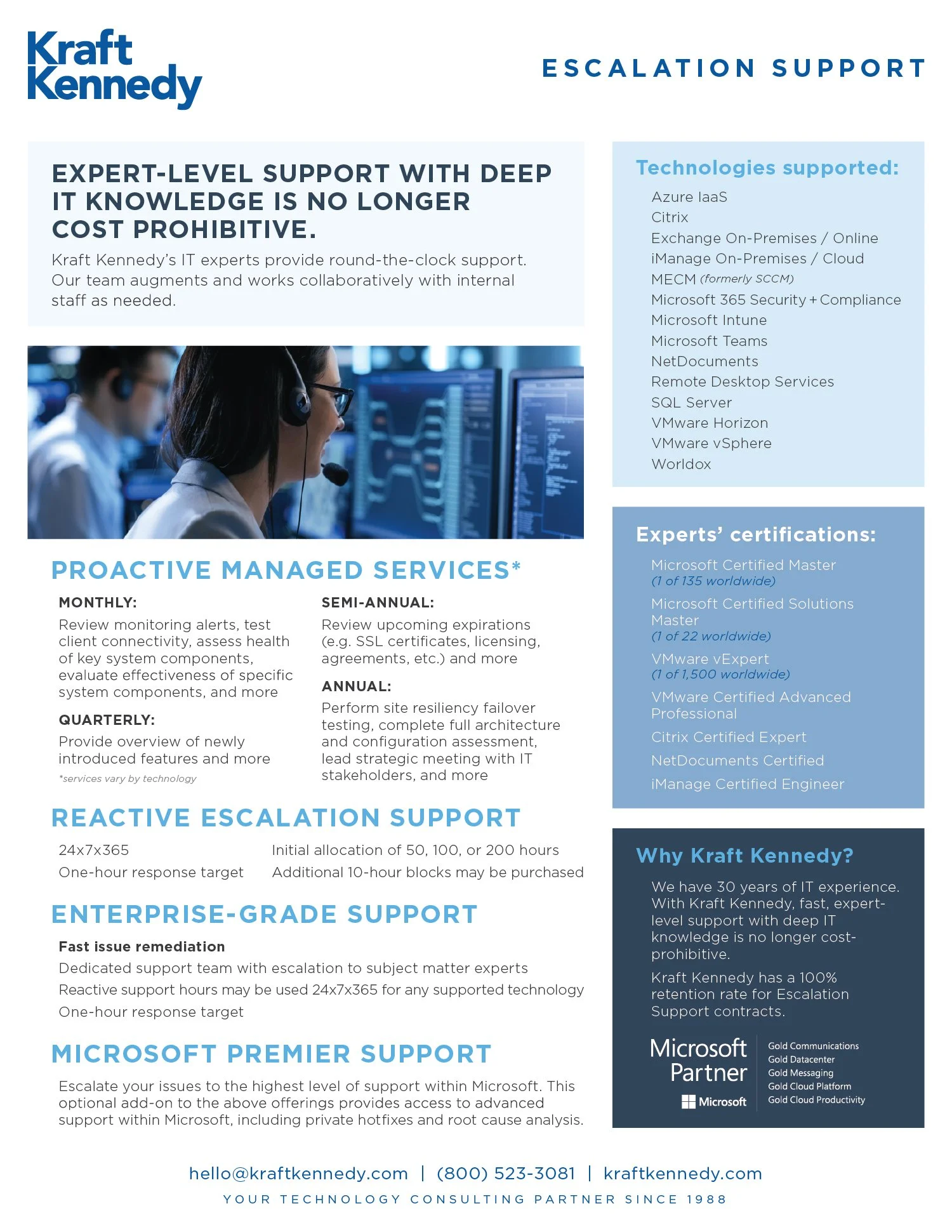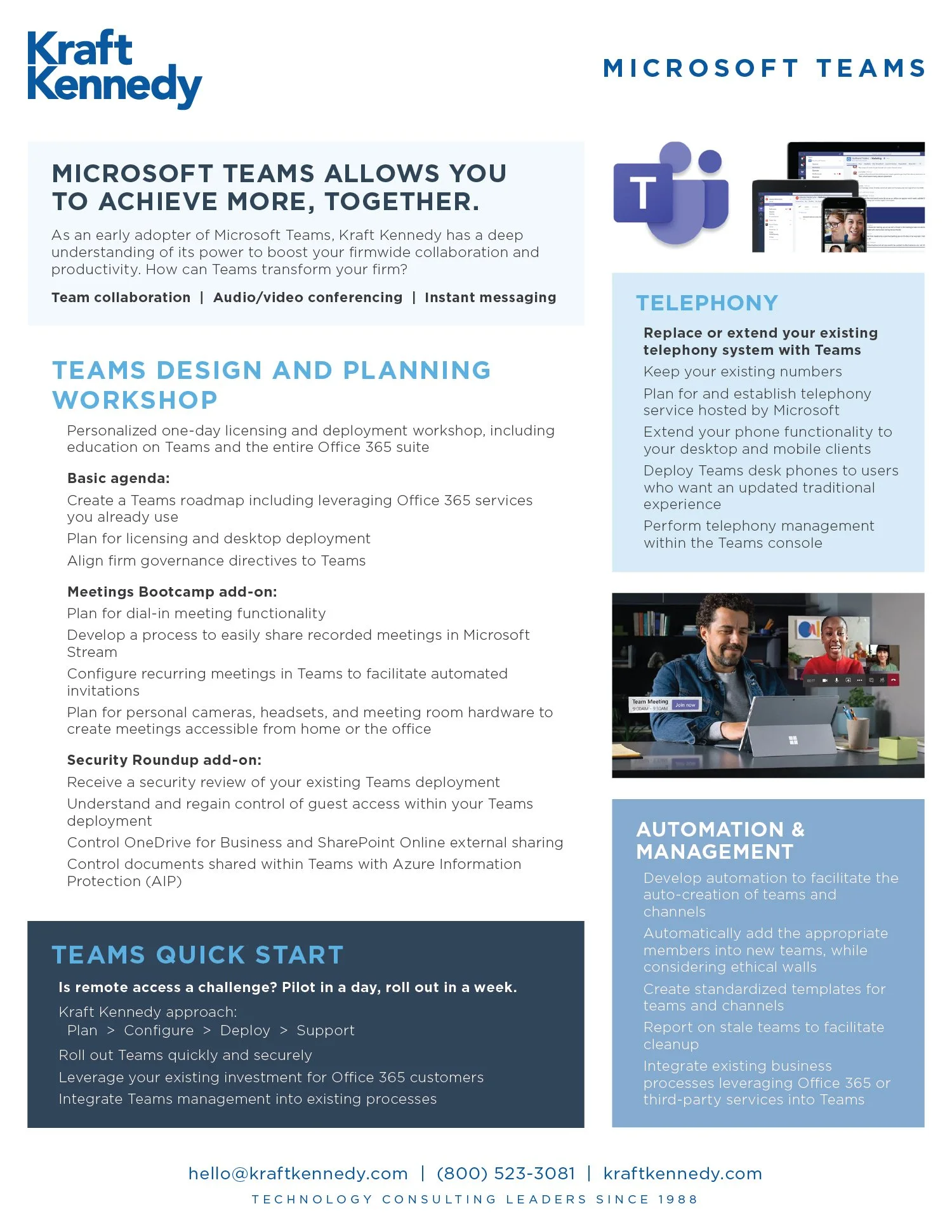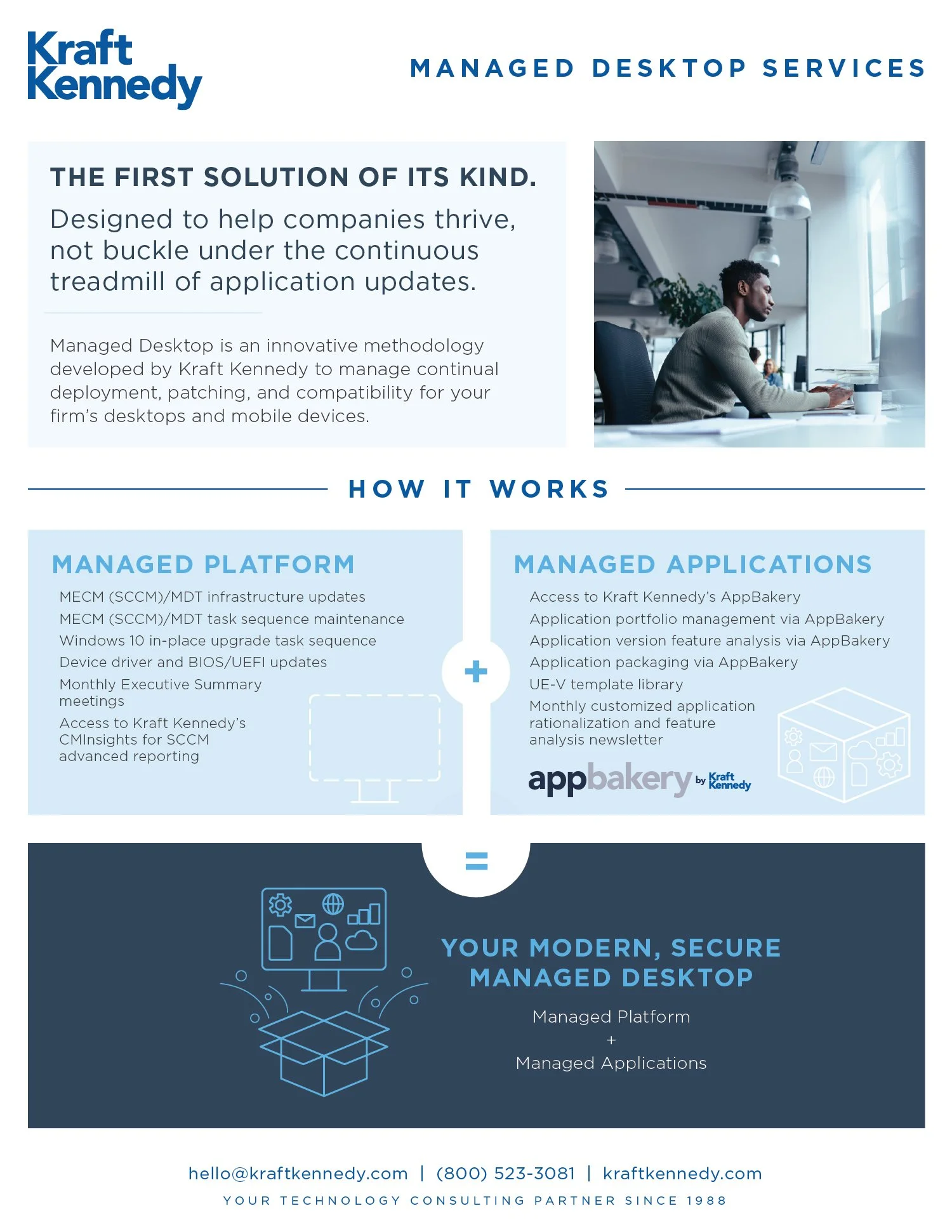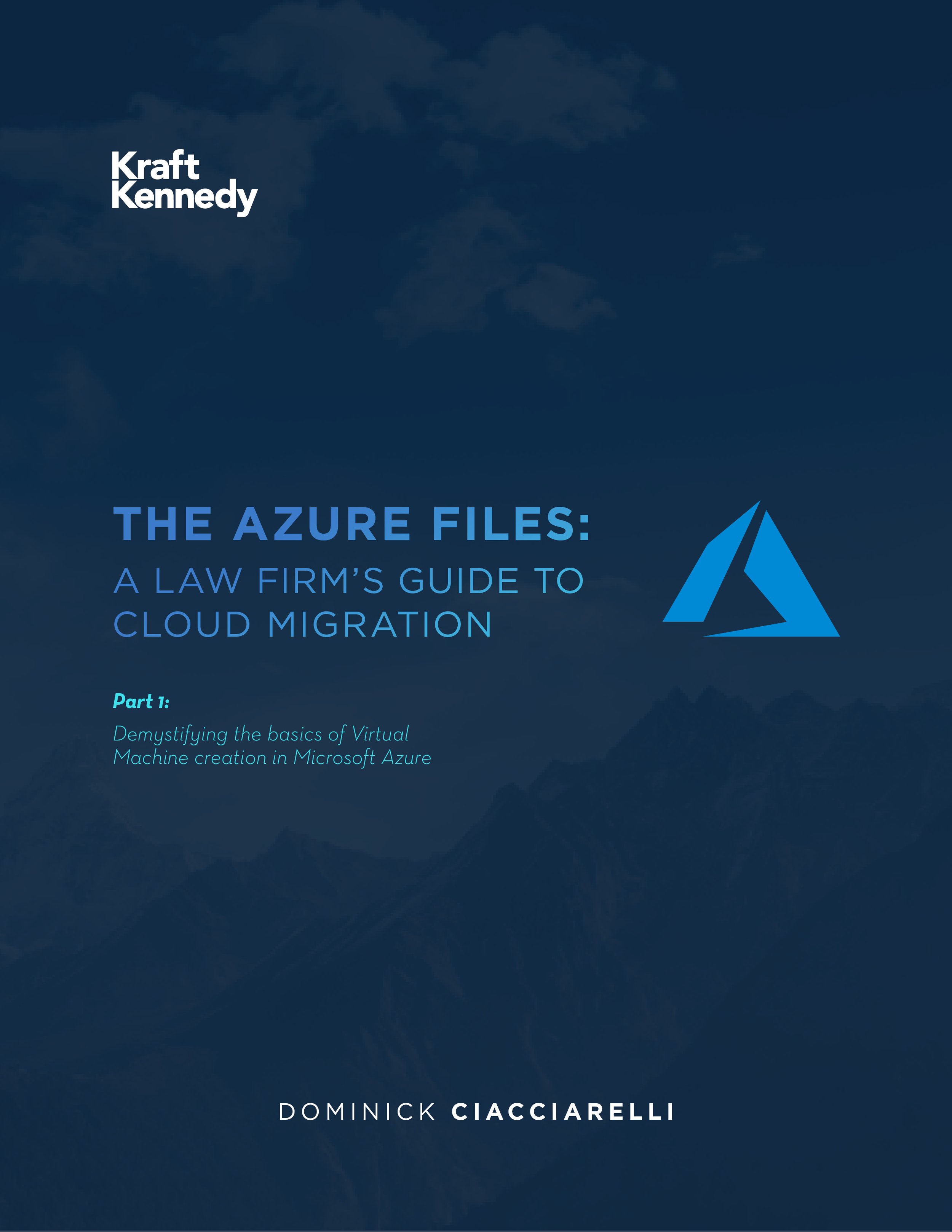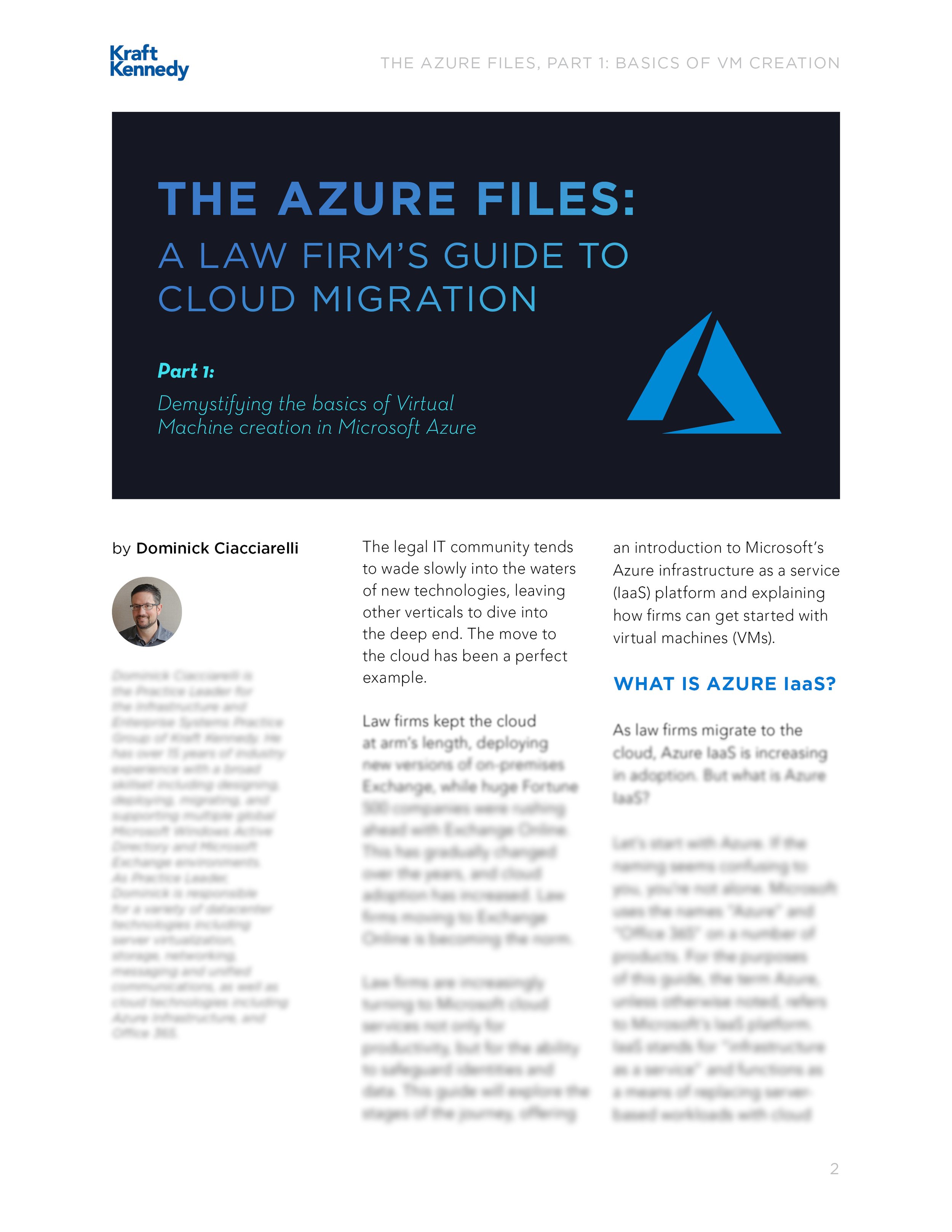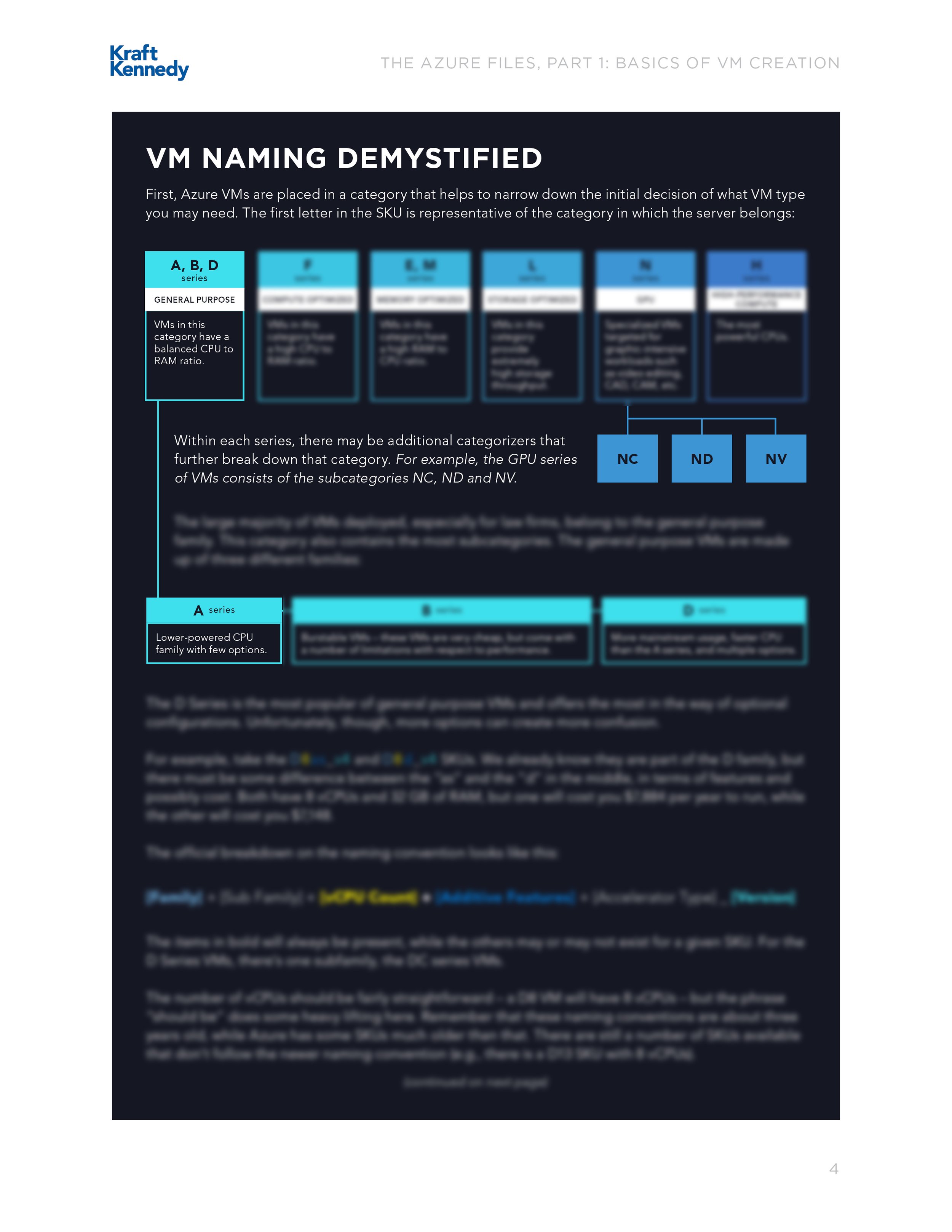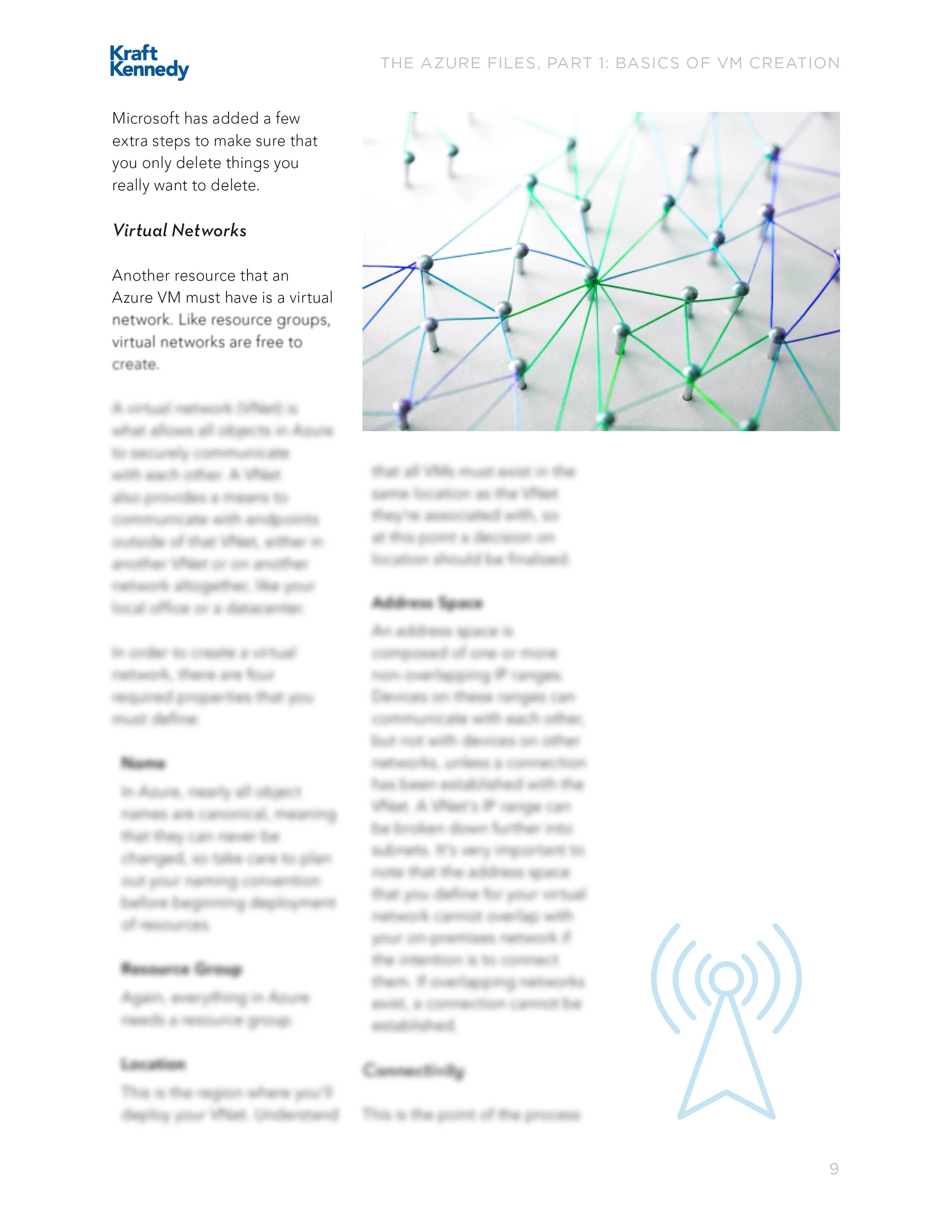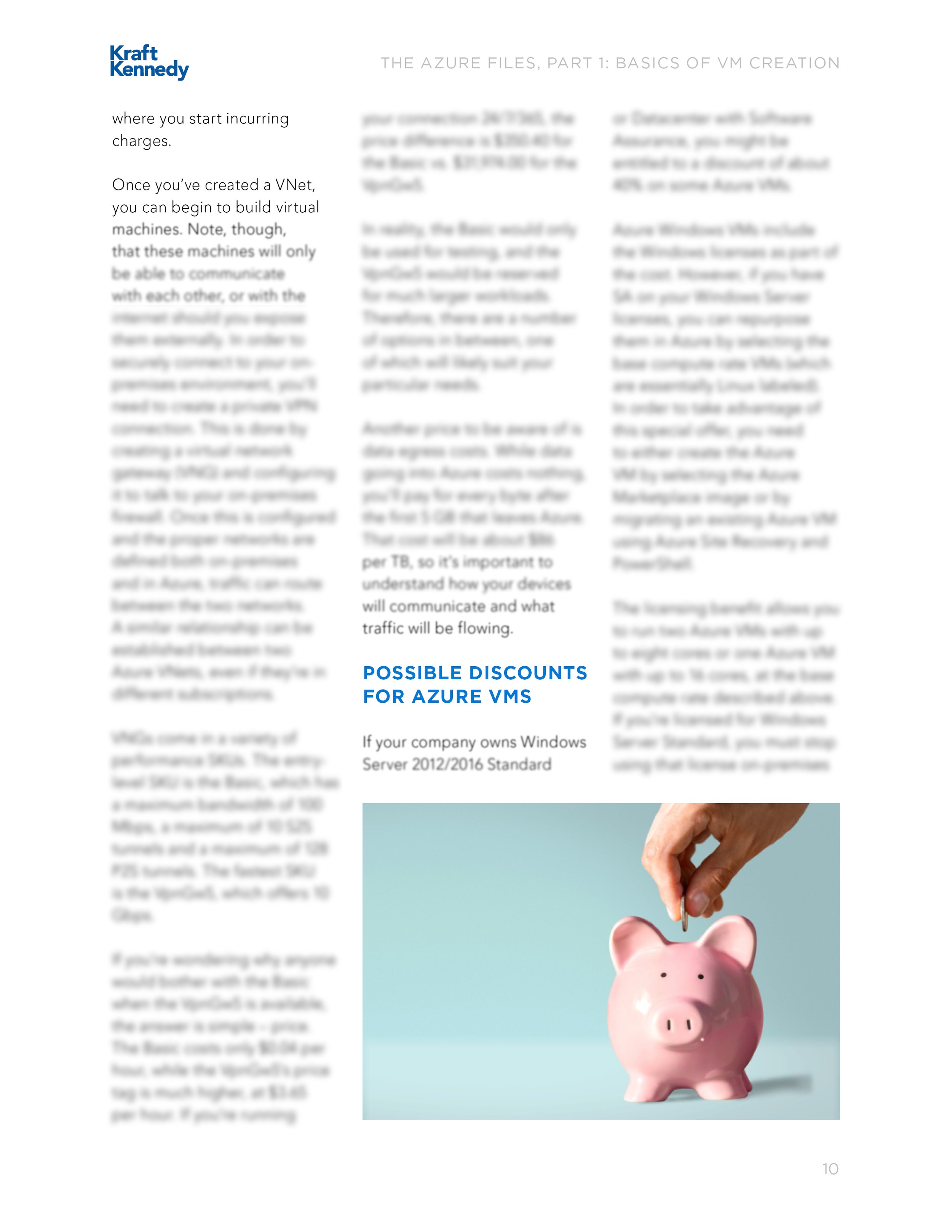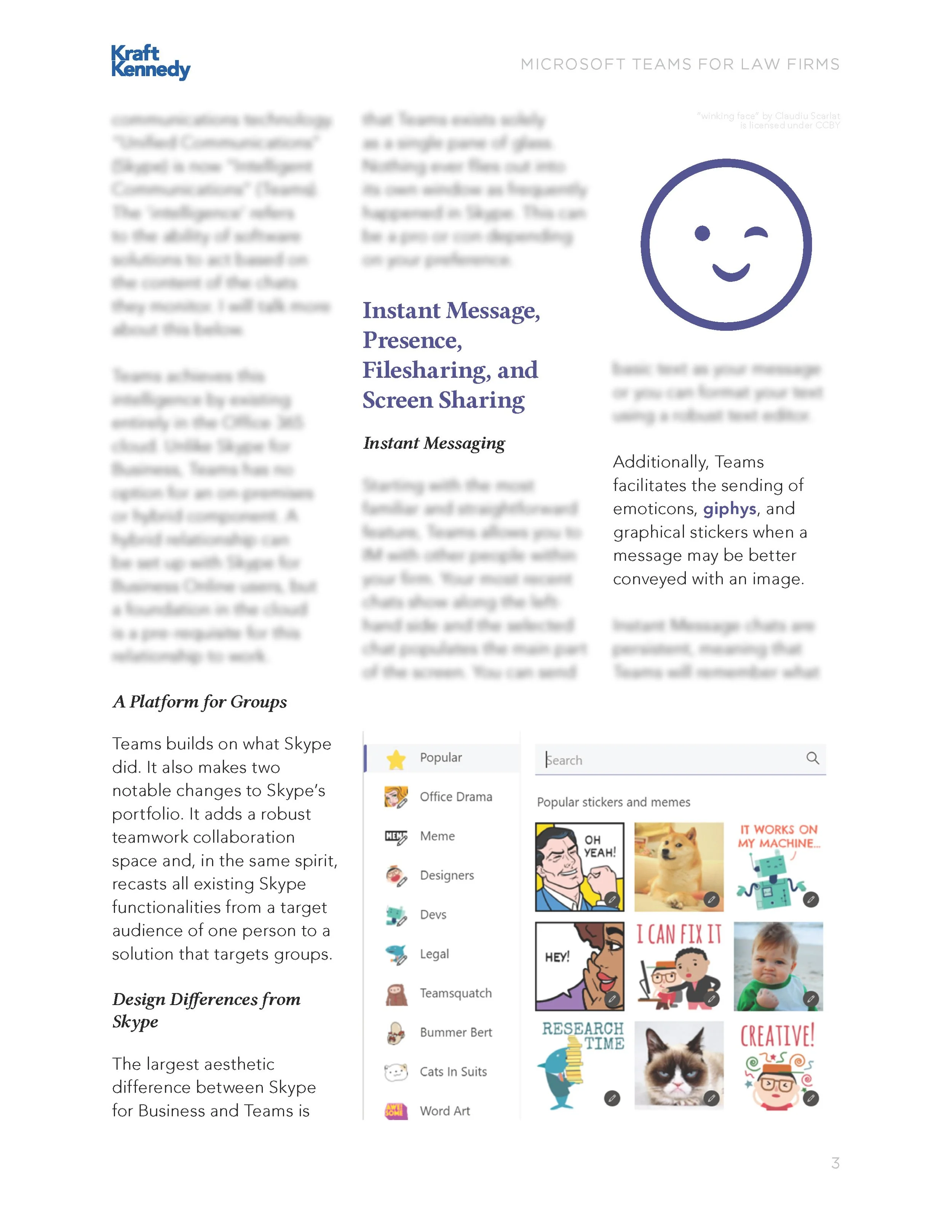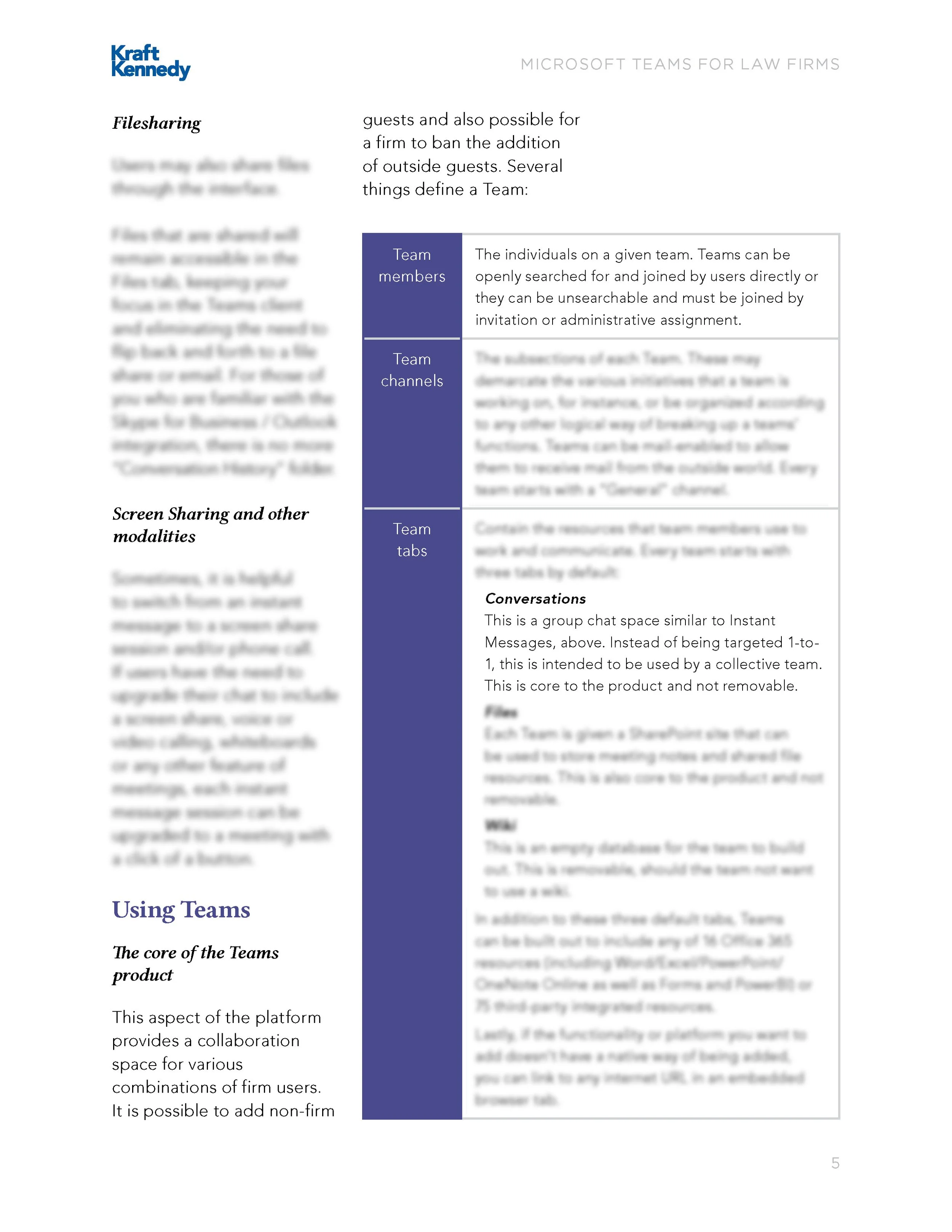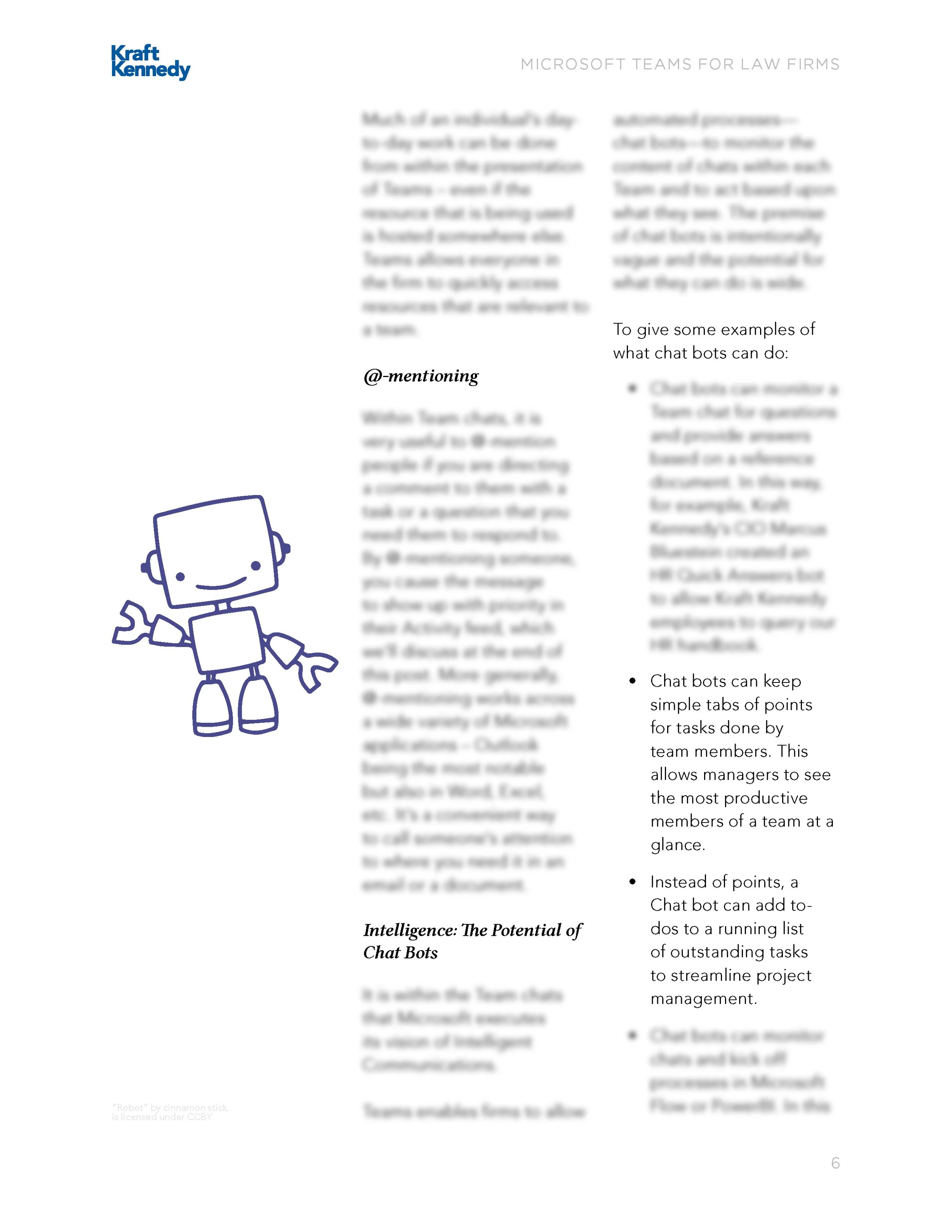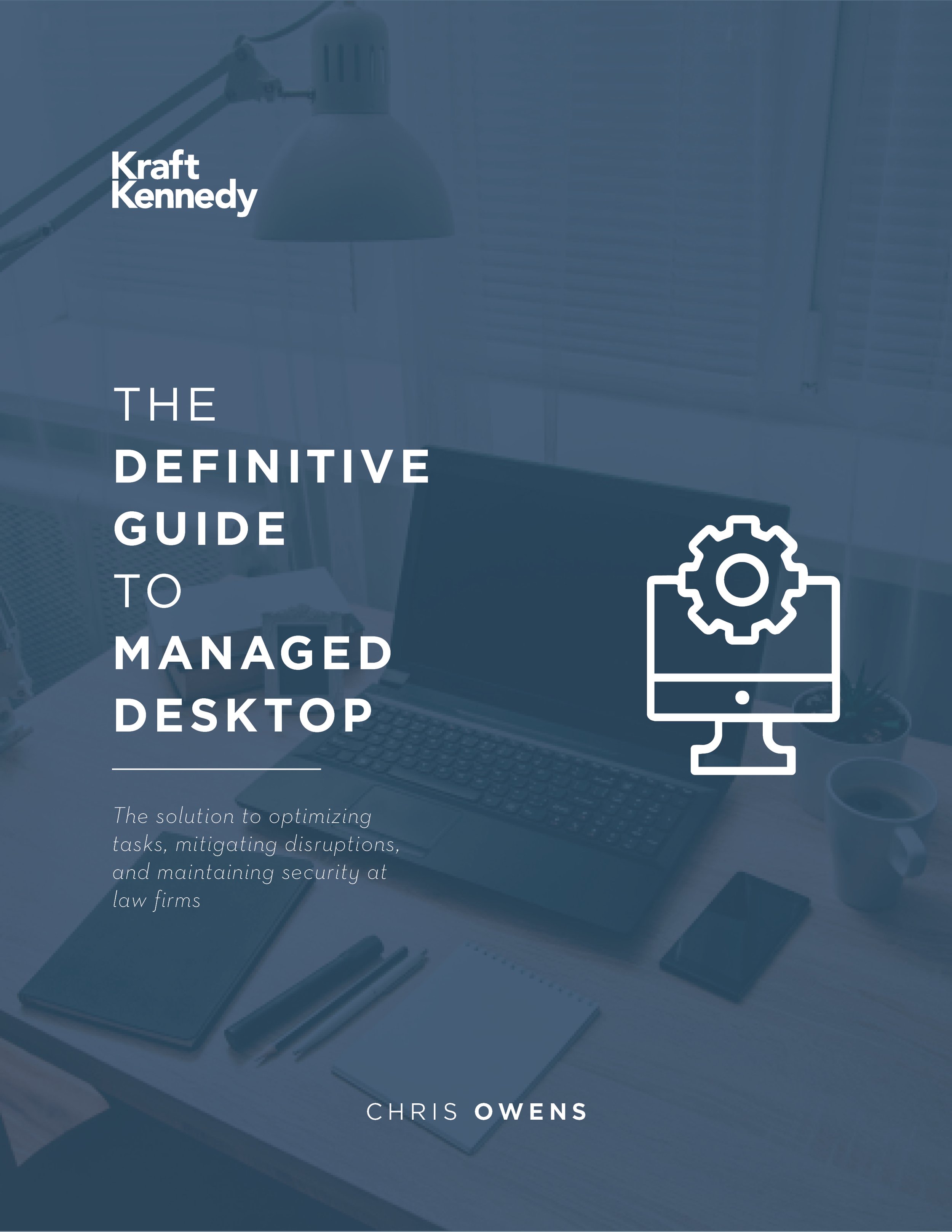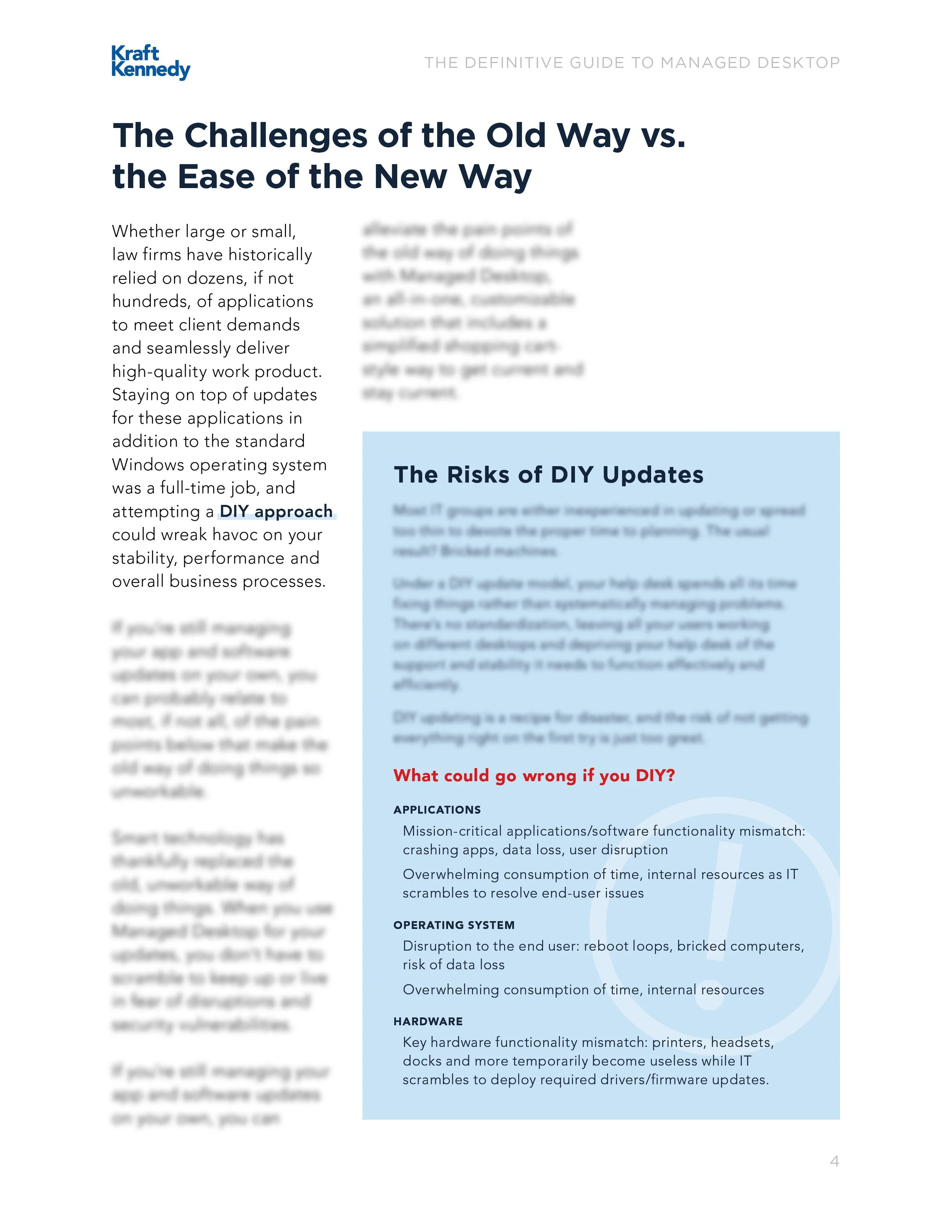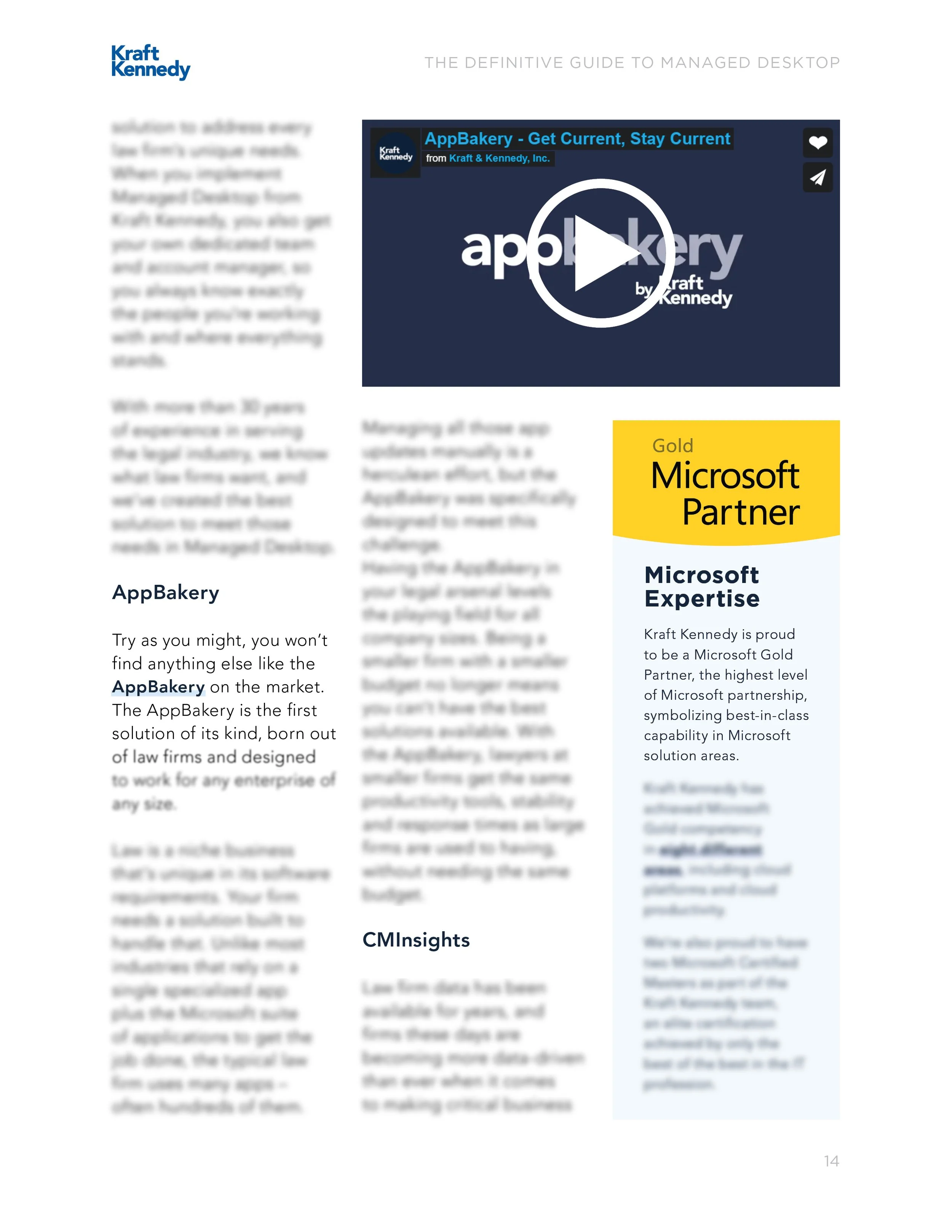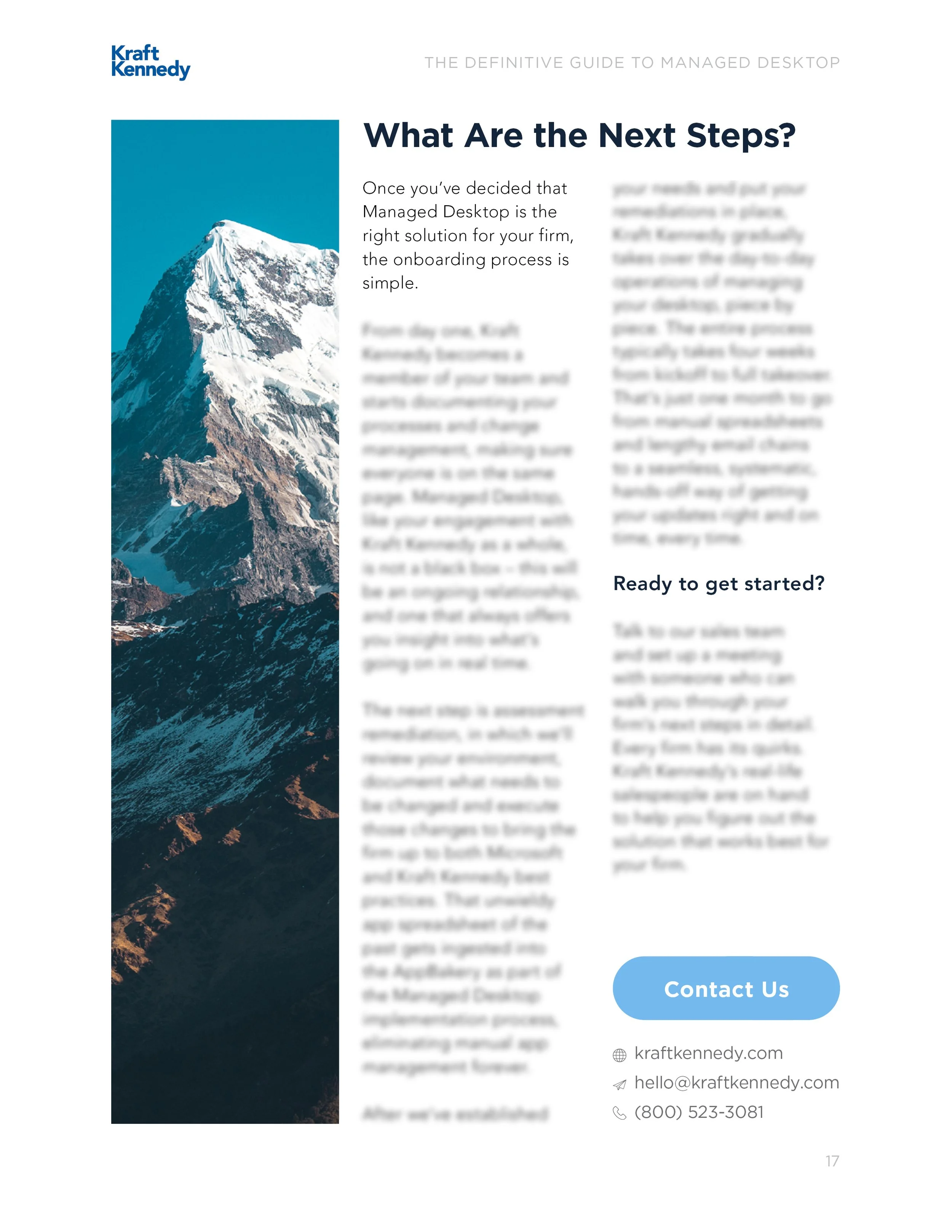Collateral
Product Sheets / Flyers
An important consideration in producing sales and marketing material for Kraft Kennedy was striking a balance between complex technical specifications that are important to IT experts, and simplified, end result-oriented content that would be enticing to prospective clients who are less technically inclined.
Our product sheets, 1-2 page flyers defining the company’s service offerings, were created to achieve this goal.
Most images licensed from Shutterstock. Most icons licensed from The Noun Project.
Whitepaper Layout
In contrast to succinct product sheets, whitepapers are long-form written documents providing an in-depth analysis of a key technology or service the company provides. Serving as gated content pieces, whitepapers represented the depth of knowledge and expertise of our in-house technologists.
Parts of the body text have been censored to protect the gated nature of this content.
To make these lengthy works easier for our readers to digest, I accentuated the text with graphics and stock imagery and varied the layout slightly from page to page. Each whitepaper received a themed cover page, and contained a call-to-action at the end to drive engagement.
Presented in an 8.5x11” format, the documents were print-ready to distribute as physical collateral if necessary, but also contained embedded links and videos for an interactive online reading experience.
Process:
Whitepaper Creation
-
The inception of a whitepaper would typically take place in one of two ways:
A content pitch from one of our engineers regarding a breakthrough technology development, or;
Marketing noticing a trend in audience interest on a certain topic and calling upon the relevant team to write a piece with their opinion on the matter.
-
Depending on the availability of the technical knowledge resource, they might assemble the written content themselves.
Our team would work with them directly to provide feedback and proof the writing.
-
If availability was limited, our team would conduct an in-depth interview with the relevant experts, to gather the base knowledge for the whitepaper. I particularly enjoyed thoroughly dissecting the hows and whys of these complicated technological topics directly with our engineers.
Relying on the interview recording and notes, our team would assemble the written content of the whitepaper and host a follow-up meeting to confirm its accuracy.
-
With the written piece finalized, I would import it into Adobe InDesign and begin breaking up the text into a three column layout. Along the way, I would parse through the subject mater and note if there were any opportunities to turn paragraphs into charts or graphics to accentuate the data.
-
With the text loosely arranged, ensuring no orphaned sentences get pushed onto another page, text hierarchy is established and applied to headings and body text. Stock images and graphics are sourced and carefully placed to “decorate” the writing. A call-to-action is included at the end.
-
A cover is designed for the document. The draft is sent back to the original knowledge resource for final proof of accuracy and appropriateness of layout strategy.
-
Interactive links are populated throughout the document and the final draft is exported. The document is published in a gated format on the company website and enters a distribution campaign including a social media announcement.
Most images licensed from Shutterstock. Most icons licensed from The Noun Project.


